-
Installing Ati drivers (please help)
Please help so far spent about 5 hours....
Trying to install the ati drivers so i can get opengl from my graphics card, have aliened the drivers (they start as an rpm). installed them (includiing recompiling the kernel....). used modconf to make sure they are installed (and added the module)
however can not get them to work whenever i call fglrxinfo or glxinfi it continues to say "mesa" driver...
I suspect it is because when i installed knoppix i select allowed hw detection,soi suspect it is recreating the xf86config-4 file evry time i restart.
so to the questojns,,,
a) how do i turn off hwdetectioon (prefrubly without reinstalling) so i can edit the xf86config file?
b) Anybody got any better idea as to why it is not working?
-
further
Further to this i reinstalled this morning using the debien install setup ... went throught each of the steps again.
This time it haschanged my xf86config-4 file, however my machine is s (when fglrxinfo is run) still saying i am using the mesa driver......
Siriously running out of ideas
When i run modprobe fglrx it says
Lengths@box:~$ modprobe fglrx
Note: /etc/modules.conf is more recent than /lib/modules/2.4.27/modules.dep
does this have anything to do with it?
modconf says it is loaded to the kernel..
My xf86config-4 looks like this
# File: XF86Config-4
# File generated by fglrxconfig (C) ATI Research, a substitute for xf86config.
# Note by ATI: the below copyright notice is there for servicing possibly
# pending third party rights on the file format and the instance of this file.
#
# Copyright (c) 1999 by The XFree86 Project, Inc.
#
# Permission is hereby granted, free of charge, to any person obtaining a
# copy of this software and associated documentation files (the "Software"),
# to deal in the Software without restriction, including without limitation
# the rights to use, copy, modify, merge, publish, distribute, sublicense,
# and/or sell copies of the Software, and to permit persons to whom the
# Software is furnished to do so, subject to the following conditions:
#
# The above copyright notice and this permission notice shall be included in
# all copies or substantial portions of the Software.
#
# THE SOFTWARE IS PROVIDED "AS IS", WITHOUT WARRANTY OF ANY KIND, EXPRESS OR
# IMPLIED, INCLUDING BUT NOT LIMITED TO THE WARRANTIES OF MERCHANTABILITY,
# FITNESS FOR A PARTICULAR PURPOSE AND NONINFRINGEMENT. IN NO EVENT SHALL
# THE XFREE86 PROJECT BE LIABLE FOR ANY CLAIM, DAMAGES OR OTHER LIABILITY,
# WHETHER IN AN ACTION OF CONTRACT, TORT OR OTHERWISE, ARISING FROM, OUT OF
# OR IN CONNECTION WITH THE SOFTWARE OR THE USE OR OTHER DEALINGS IN THE
# SOFTWARE.
#
# Except as contained in this notice, the name of the XFree86 Project shall
# not be used in advertising or otherwise to promote the sale, use or other
# dealings in this Software without prior written authorization from the
# XFree86 Project.
#
# ************************************************** ********************
# Refer to the XF86Config(4/5) man page for details about the format of
# this file.
# ************************************************** ********************
# ************************************************** ********************
# DRI Section
# ************************************************** ********************
Section "dri"
# Access to OpenGL ICD is allowed for all users:
Mode 0666
# Access to OpenGL ICD is restricted to a specific user group:
# Group 100 # users
# Mode 0660
EndSection
# ************************************************** ********************
# Module section -- this section is used to specify
# which dynamically loadable modules to load.
# ************************************************** ********************
#
Section "Module"
# This loads the DBE extension module.
Load "dbe" # Double buffer extension
# This loads the miscellaneous extensions module, and disables
# initialisation of the XFree86-DGA extension within that module.
SubSection "extmod"
Option "omit xfree86-dga" # don't initialise the DGA extension
EndSubSection
# This loads the Type1 and FreeType font modules
Load "type1"
Load "freetype"
# This loads the GLX module
Load "glx" # libglx.a
Load "dri" # libdri.a
EndSection
# ************************************************** ********************
# Files section. This allows default font and rgb paths to be set
# ************************************************** ********************
Section "Files"
# The location of the RGB database. Note, this is the name of the
# file minus the extension (like ".txt" or ".db"). There is normally
# no need to change the default.
RgbPath "/usr/X11R6/lib/X11/rgb"
# Multiple FontPath entries are allowed (which are concatenated together),
# as well as specifying multiple comma-separated entries in one FontPath
# command (or a combination of both methods)
#
# If you don't have a floating point coprocessor and emacs, Mosaic or other
# programs take long to start up, try moving the Type1 and Speedo directory
# to the end of this list (or comment them out).
#
# FontPath "/usr/X11R6/lib/X11/fonts/local/"
FontPath "/usr/X11R6/lib/X11/fonts/misc/"
FontPath "/usr/X11R6/lib/X11/fonts/75dpi/:unscaled"
FontPath "/usr/X11R6/lib/X11/fonts/100dpi/:unscaled"
FontPath "/usr/X11R6/lib/X11/fonts/Type1/"
FontPath "/usr/X11R6/lib/X11/fonts/Speedo/"
FontPath "/usr/X11R6/lib/X11/fonts/75dpi/"
FontPath "/usr/X11R6/lib/X11/fonts/100dpi/"
# The module search path. The default path is shown here.
# ModulePath "/usr/X11R6/lib/modules"
EndSection
# ************************************************** ********************
# Server flags section.
# ************************************************** ********************
Section "ServerFlags"
# Uncomment this to cause a core dump at the spot where a signal is
# received. This may leave the console in an unusable state, but may
# provide a better stack trace in the core dump to aid in debugging
# Option "NoTrapSignals"
# Uncomment this to disable the <Crtl><Alt><BS> server abort sequence
# This allows clients to receive this key event.
# Option "DontZap"
# Uncomment this to disable the <Crtl><Alt><KP_+>/<KP_-> mode switching
# sequences. This allows clients to receive these key events.
# Option "Dont Zoom"
# Uncomment this to disable tuning with the xvidtune client. With
# it the client can still run and fetch card and monitor attributes,
# but it will not be allowed to change them. If it tries it will
# receive a protocol error.
# Option "DisableVidModeExtension"
# Uncomment this to enable the use of a non-local xvidtune client.
# Option "AllowNonLocalXvidtune"
# Uncomment this to disable dynamically modifying the input device
# (mouse and keyboard) settings.
# Option "DisableModInDev"
# Uncomment this to enable the use of a non-local client to
# change the keyboard or mouse settings (currently only xset).
# Option "AllowNonLocalModInDev"
EndSection
# ************************************************** ********************
# Input devices
# ************************************************** ********************
# ************************************************** ********************
# Core keyboard's InputDevice section
# ************************************************** ********************
Section "InputDevice"
Identifier "Keyboard1"
Driver "Keyboard"
# For most OSs the protocol can be omitted (it defaults to "Standard").
# When using XQUEUE (only for SVR3 and SVR4, but not Solaris),
# uncomment the following line.
# Option "Protocol" "Xqueue"
Option "AutoRepeat" "500 30"
# Specify which keyboard LEDs can be user-controlled (eg, with xset(1))
# Option "Xleds" "1 2 3"
# Option "LeftAlt" "Meta"
# Option "RightAlt" "ModeShift"
# To customise the XKB settings to suit your keyboard, modify the
# lines below (which are the defaults). For example, for a non-U.S.
# keyboard, you will probably want to use:
# Option "XkbModel" "pc102"
# If you have a US Microsoft Natural keyboard, you can use:
# Option "XkbModel" "microsoft"
#
# Then to change the language, change the Layout setting.
# For example, a german layout can be obtained with:
# Option "XkbLayout" "de"
# or:
# Option "XkbLayout" "de"
# Option "XkbVariant" "nodeadkeys"
#
# If you'd like to switch the positions of your capslock and
# control keys, use:
# Option "XkbOptions" "ctrl:swapcaps"
# These are the default XKB settings for XFree86
# Option "XkbRules" "xfree86"
# Option "XkbModel" "pc101"
# Option "XkbLayout" "us"
# Option "XkbVariant" ""
# Option "XkbOptions" ""
# Option "XkbDisable"
Option "XkbRules" "xfree86"
Option "XkbModel" "pc105"
Option "XkbLayout" "gb"
EndSection
# ************************************************** ********************
# Core Pointer's InputDevice section
# ************************************************** ********************
Section "InputDevice"
# Identifier and driver
Identifier "Mouse1"
Driver "mouse"
Option "Protocol" "ImPS/2"
Option "ZAxisMapping" "4 5"
Option "Device" "/dev/mouse"
# When using XQUEUE, comment out the above two lines, and uncomment
# the following line.
# Option "Protocol" "Xqueue"
# Baudrate and SampleRate are only for some Logitech mice. In
# almost every case these lines should be omitted.
# Option "BaudRate" "9600"
# Option "SampleRate" "150"
# Emulate3Buttons is an option for 2-button Microsoft mice
# Emulate3Timeout is the timeout in milliseconds (default is 50ms)
# Option "Emulate3Buttons"
# Option "Emulate3Timeout" "50"
# ChordMiddle is an option for some 3-button Logitech mice
# Option "ChordMiddle"
EndSection
# ************************************************** ********************
# Other input device sections
# this is optional and is required only if you
# are using extended input devices. This is for example only. Refer
# to the XF86Config man page for a description of the options.
# ************************************************** ********************
#
# Section "InputDevice"
# Identifier "Mouse2"
# Driver "mouse"
# Option "Protocol" "MouseMan"
# Option "Device" "/dev/mouse2"
# EndSection
#
# Section "InputDevice"
# Identifier "spaceball"
# Driver "magellan"
# Option "Device" "/dev/cua0"
# EndSection
#
# Section "InputDevice"
# Identifier "spaceball2"
# Driver "spaceorb"
# Option "Device" "/dev/cua0"
# EndSection
#
# Section "InputDevice"
# Identifier "touchscreen0"
# Driver "microtouch"
# Option "Device" "/dev/ttyS0"
# Option "MinX" "1412"
# Option "MaxX" "15184"
# Option "MinY" "15372"
# Option "MaxY" "1230"
# Option "ScreenNumber" "0"
# Option "ReportingMode" "Scaled"
# Option "ButtonNumber" "1"
# Option "SendCoreEvents"
# EndSection
#
# Section "InputDevice"
# Identifier "touchscreen1"
# Driver "elo2300"
# Option "Device" "/dev/ttyS0"
# Option "MinX" "231"
# Option "MaxX" "3868"
# Option "MinY" "3858"
# Option "MaxY" "272"
# Option "ScreenNumber" "0"
# Option "ReportingMode" "Scaled"
# Option "ButtonThreshold" "17"
# Option "ButtonNumber" "1"
# Option "SendCoreEvents"
# EndSection
# ************************************************** ********************
# Monitor section
# ************************************************** ********************
# Any number of monitor sections may be present
Section "Monitor"
Identifier "Monitor0"
HorizSync 31.5 - 48.4
VertRefresh 50 - 70
Option "DPMS"
# === mode lines based on GTF ===
# VGA @ 100Hz
# Modeline "640x480@100" 43.163 640 680 744 848 480 481 484 509 +hsync +vsync
# SVGA @ 100Hz
# Modeline "800x600@100" 68.179 800 848 936 1072 600 601 604 636 +hsync +vsync
# XVGA @ 100Hz
# Modeline "1024x768@100" 113.309 1024 1096 1208 1392 768 769 772 814 +hsync +vsync
# 1152x864 @ 60Hz
# Modeline "1152x864@60" 81.642 1152 1216 1336 1520 864 865 868 895 +hsync +vsync
# 1152x864 @ 85Hz
# Modeline "1152x864@85" 119.651 1152 1224 1352 1552 864 865 868 907 +hsync +vsync
# 1152x864 @ 100Hz
# Modeline "1152x864@100" 143.472 1152 1232 1360 1568 864 865 868 915 +hsync +vsync
# 1280x960 @ 75Hz
# Modeline "1280x960@75" 129.859 1280 1368 1504 1728 960 961 964 1002 +hsync +vsync
# 1280x960 @ 100Hz
# Modeline "1280x960@100" 178.992 1280 1376 1520 1760 960 961 964 1017 +hsync +vsync
# SXGA @ 100Hz
# Modeline "1280x1024@100" 190.960 1280 1376 1520 1760 1024 1025 1028 1085 +hsync +vsync
# SPEA GDM-1950 (60Hz,64kHz,110MHz,-,-): 1280x1024 @ V-freq: 60.00 Hz, H-freq: 63.73 KHz
# Modeline "GDM-1950" 109.62 1280 1336 1472 1720 1024 1024 1026 1062 -hsync -vsync
# 1600x1000 @ 60Hz
# Modeline "1600x1000" 133.142 1600 1704 1872 2144 1000 1001 1004 1035 +hsync +vsync
# 1600x1000 @ 75Hz
# Modeline "1600x1000" 169.128 1600 1704 1880 2160 1000 1001 1004 1044 +hsync +vsync
# 1600x1000 @ 85Hz
# Modeline "1600x1000" 194.202 1600 1712 1888 2176 1000 1001 1004 1050 +hsync +vsync
# 1600x1000 @ 100Hz
# Modeline "1600x1000" 232.133 1600 1720 1896 2192 1000 1001 1004 1059 +hsync +vsync
# 1600x1024 @ 60Hz
# Modeline "1600x1024" 136.385 1600 1704 1872 2144 1024 1027 1030 1060 +hsync +vsync
# 1600x1024 @ 75Hz
# Modeline "1600x1024" 174.416 1600 1712 1888 2176 1024 1025 1028 1069 +hsync +vsync
# 1600x1024 @ 76Hz
# Modeline "1600x1024" 170.450 1600 1632 1792 2096 1024 1027 1030 1070 +hsync +vsync
# 1600x1024 @ 85Hz
# Modeline "1600x1024" 198.832 1600 1712 1888 2176 1024 1027 1030 1075 +hsync +vsync
# 1920x1080 @ 60Hz
# Modeline "1920x1080" 172.798 1920 2040 2248 2576 1080 1081 1084 1118 -hsync -vsync
# 1920x1080 @ 75Hz
# Modeline "1920x1080" 211.436 1920 2056 2264 2608 1080 1081 1084 1126 +hsync +vsync
# 1920x1200 @ 60Hz
# Modeline "1920x1200" 193.156 1920 2048 2256 2592 1200 1201 1203 1242 +hsync +vsync
# 1920x1200 @ 75Hz
# Modeline "1920x1200" 246.590 1920 2064 2272 2624 1200 1201 1203 1253 +hsync +vsync
# 2048x1536 @ 60
# Modeline "2048x1536" 266.952 2048 2200 2424 2800 1536 1537 1540 1589 +hsync +vsync
# 2048x1536 @ 60
# Modeline "2048x1536" 266.952 2048 2200 2424 2800 1536 1537 1540 1589 +hsync +vsync
# 1400x1050 @ 60Hz M9 Laptop mode
# ModeLine "1400x1050" 122.000 1400 1488 1640 1880 1050 1052 1064 1082 +hsync +vsync
# 1920x2400 @ 25Hz for IBM T221, VS VP2290 and compatible display devices
# Modeline "1920x2400@25" 124.620 1920 1928 1980 2048 2400 2401 2403 2434 +hsync +vsync
# 1920x2400 @ 30Hz for IBM T221, VS VP2290 and compatible display devices
# Modeline "1920x2400@30" 149.250 1920 1928 1982 2044 2400 2402 2404 2434 +hsync +vsync
EndSection
# ************************************************** ********************
# Graphics device section
# ************************************************** ********************
# Any number of graphics device sections may be present
# Standard VGA Device:
Section "Device"
Identifier "Standard VGA"
VendorName "Unknown"
BoardName "Unknown"
# The chipset line is optional in most cases. It can be used to override
# the driver's chipset detection, and should not normally be specified.
# Chipset "generic"
# The Driver line must be present. When using run-time loadable driver
# modules, this line instructs the server to load the specified driver
# module. Even when not using loadable driver modules, this line
# indicates which driver should interpret the information in this section.
Driver "vga"
# The BusID line is used to specify which of possibly multiple devices
# this section is intended for. When this line isn't present, a device
# section can only match up with the primary video device. For PCI
# devices a line like the following could be used. This line should not
# normally be included unless there is more than one video device
# installed.
# BusID "PCI:0:10:0"
# VideoRam 256
# Clocks 25.2 28.3
EndSection
# === ATI device section ===
Section "Device"
Identifier "ATI Graphics Adapter"
Driver "fglrx"
# ### generic DRI settings ###
# === disable PnP Monitor ===
#Option "NoDDC"
# === disable/enable XAA/DRI ===
Option "no_accel" "no"
Option "no_dri" "no"
# === misc DRI settings ===
Option "mtrr" "off" # disable DRI mtrr mapper, driver has its own code for mtrr
# ### FireGL DDX driver module specific settings ###
# === Screen Management ===
Option "DesktopSetup" "0x00000000"
Option "MonitorLayout" "AUTO, AUTO"
Option "IgnoreEDID" "off"
Option "HSync2" "unspecified"
Option "VRefresh2" "unspecified"
Option "ScreenOverlap" "0"
# === TV-out Management ===
Option "NoTV" "yes"
Option "TVStandard" "NTSC-M"
Option "TVHSizeAdj" "0"
Option "TVVSizeAdj" "0"
Option "TVHPosAdj" "0"
Option "TVVPosAdj" "0"
Option "TVHStartAdj" "0"
Option "TVColorAdj" "0"
Option "GammaCorrectionI" "0x00000000"
Option "GammaCorrectionII" "0x00000000"
# === OpenGL specific profiles/settings ===
Option "Capabilities" "0x00000000"
# === Video Overlay for the Xv extension ===
Option "VideoOverlay" "on"
# === OpenGL Overlay ===
# Note: When OpenGL Overlay is enabled, Video Overlay
# will be disabled automatically
Option "OpenGLOverlay" "off"
# === Center Mode (Laptops only) ===
Option "CenterMode" "off"
# === Pseudo Color Visuals (8-bit visuals) ===
Option "PseudoColorVisuals" "off"
# === QBS Management ===
Option "Stereo" "off"
Option "StereoSyncEnable" "1"
# === FSAA Management ===
Option "FSAAEnable" "no"
Option "FSAAScale" "1"
Option "FSAADisableGamma" "no"
Option "FSAACustomizeMSPos" "no"
Option "FSAAMSPosX0" "0.000000"
Option "FSAAMSPosY0" "0.000000"
Option "FSAAMSPosX1" "0.000000"
Option "FSAAMSPosY1" "0.000000"
Option "FSAAMSPosX2" "0.000000"
Option "FSAAMSPosY2" "0.000000"
Option "FSAAMSPosX3" "0.000000"
Option "FSAAMSPosY3" "0.000000"
Option "FSAAMSPosX4" "0.000000"
Option "FSAAMSPosY4" "0.000000"
Option "FSAAMSPosX5" "0.000000"
Option "FSAAMSPosY5" "0.000000"
# === Misc Options ===
Option "UseFastTLS" "2"
Option "BlockSignalsOnLock" "on"
Option "UseInternalAGPGART" "yes"
Option "ForceGenericCPU" "no"
BusID "PCI:1:0:0" # vendor=1002, device=5964
Screen 0
EndSection
# ************************************************** ********************
# Screen sections
# ************************************************** ********************
# Any number of screen sections may be present. Each describes
# the configuration of a single screen. A single specific screen section
# may be specified from the X server command line with the "-screen"
# option.
Section "Screen"
Identifier "Screen0"
Device "ATI Graphics Adapter"
Monitor "Monitor0"
DefaultDepth 24
#Option "backingstore"
Subsection "Display"
Depth 24
Modes "1024x768"
ViewPort 0 0 # initial origin if mode is smaller than desktop
# Virtual 1280 1024
EndSubsection
EndSection
# ************************************************** ********************
# ServerLayout sections.
# ************************************************** ********************
# Any number of ServerLayout sections may be present. Each describes
# the way multiple screens are organised. A specific ServerLayout
# section may be specified from the X server command line with the
# "-layout" option. In the absence of this, the first section is used.
# When now ServerLayout section is present, the first Screen section
# is used alone.
Section "ServerLayout"
# The Identifier line must be present
Identifier "Server Layout"
# Each Screen line specifies a Screen section name, and optionally
# the relative position of other screens. The four names after
# primary screen name are the screens to the top, bottom, left and right
# of the primary screen.
Screen "Screen0"
# Each InputDevice line specifies an InputDevice section name and
# optionally some options to specify the way the device is to be
# used. Those options include "CorePointer", "CoreKeyboard" and
# "SendCoreEvents".
InputDevice "Mouse1" "CorePointer"
InputDevice "Keyboard1" "CoreKeyboard"
EndSection
### EOF ###
-
-
Worked it out
Worked out what was the problem (was actually using that website)
Have a SIS chipset in my motherboard (PC chips m848a), the AGP controller for the chipset is not recognised by LINUX until kernel version 4.6.8. As a result even though the drivers where compiling etc correctly the kernel was not recognising the chipset so running them without opengl support...
Used Kanotix to install (2.6.10 kernel) and it worked first time...
-
Worked it out
Worked out what was the problem (was actually using that website)
Have a SIS chipset in my motherboard (PC chips m848a), the AGP controller for the chipset is not recognised by LINUX until kernel version 4.6.8. As a result even though the drivers where compiling etc correctly the kernel was not recognising the chipset so running them without opengl support...
Used Kanotix to install (2.6.10 kernel) and it worked first time...
Similar Threads
-
By rph111745 in forum Hardware & Booting
Replies: 0
Last Post: 06-11-2006, 05:19 AM
-
By Cyrus in forum General Support
Replies: 1
Last Post: 11-03-2004, 12:32 AM
-
By Bilpo in forum General Support
Replies: 4
Last Post: 10-24-2004, 07:49 PM
-
By Visceral in forum Hardware & Booting
Replies: 3
Last Post: 05-19-2004, 05:48 PM
-
By nimdaclaet in forum General Support
Replies: 0
Last Post: 07-10-2003, 06:54 PM
 Posting Permissions
Posting Permissions
- You may not post new threads
- You may not post replies
- You may not post attachments
- You may not edit your posts
-
Forum Rules

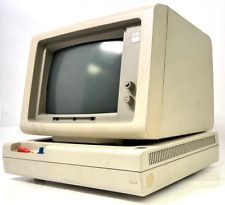
Vintage 5362 IBM System/36 Mini-Computer Mainframe 5291 2, CRT Terminal DM12N501
$249.99
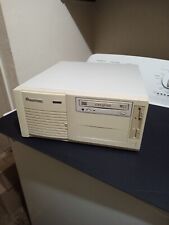
Magitronic Quad Speed Creative
$150.00
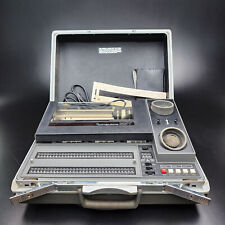
Computone Systems SST Teletype Portable Briefcase Mainframe Computer Terminal
$169.95
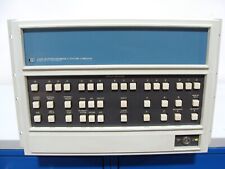
Vintage Hewlett Packard HP 2100S Microprogrammable Computer System Mainframe #2
$1499.99
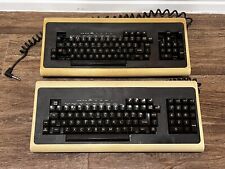
Lot of 2 Vintage DEC Digital Computer Mainframe VT100 Keyboards Untested
$239.99
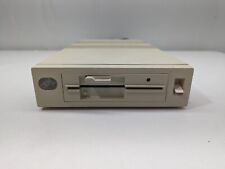
IBM Type 4869 External 5 1/4in Floppy Disk Drive Mainframe Collection - UNTESTED
$75.00
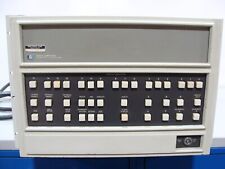
Vintage Hewlett Packard HP 2100A Microprogrammable Computer System Mainframe
$1499.99
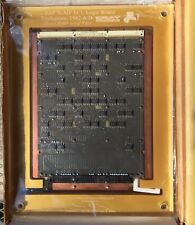
Cray Research Supercomputer Cray X-MP ECL Logic Board
$149.99
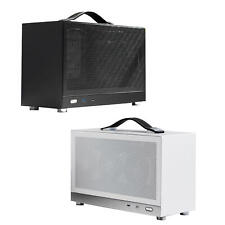
S300 Chassis Portable ITX Portable TYPECmini Desktop Computer Mainframe Chassis
$221.99
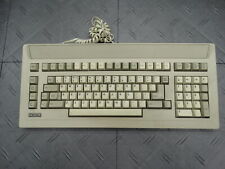
NCR Mechanical Keyboard USB Wired 01027100 Beige Mainframe Collection
$261.99



 Reply With Quote
Reply With Quote










